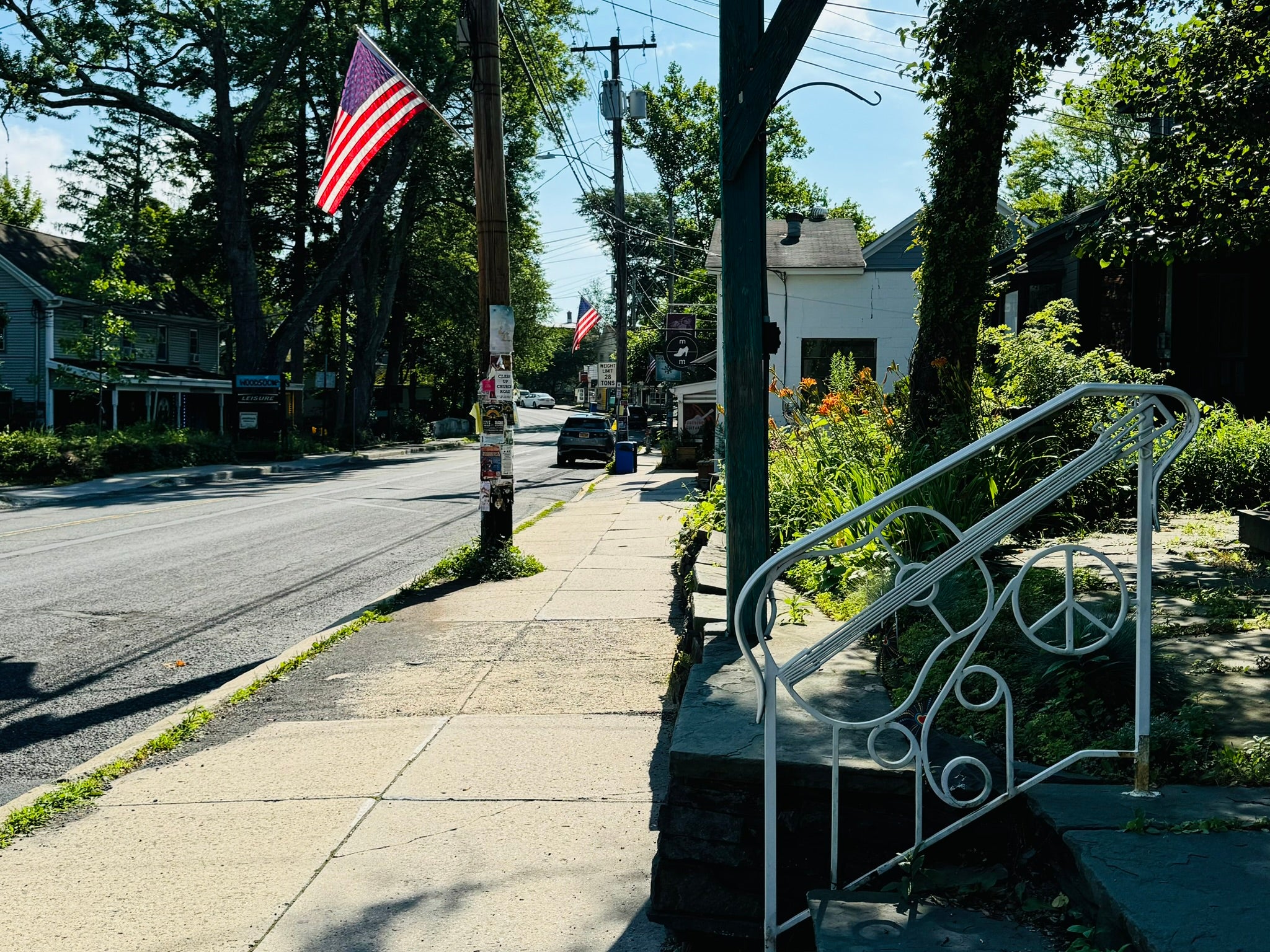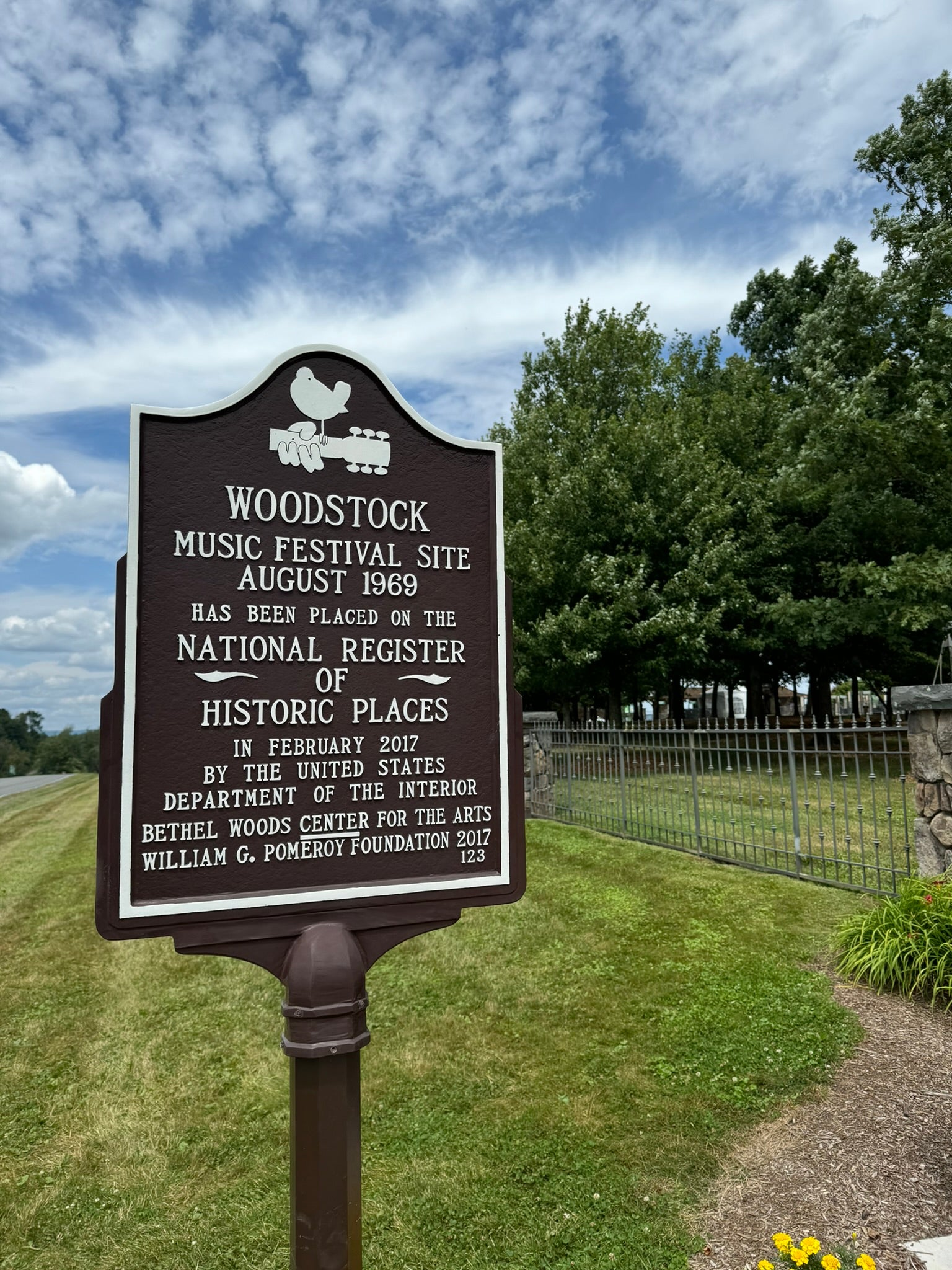The Independent's journalism is supported by our readers. When you purchase through links on our site, we may earn commission.
Woodstock was a pivotal moment in history – how much hippy spirit is left in upstate New York?
An iconic music moment took place in the leafy solitude of upstate New York 55 years ago – Matt Charlton discovers if there’s a lasting legacy of peace and love in the area

Your support helps us to tell the story
From reproductive rights to climate change to Big Tech, The Independent is on the ground when the story is developing. Whether it's investigating the financials of Elon Musk's pro-Trump PAC or producing our latest documentary, 'The A Word', which shines a light on the American women fighting for reproductive rights, we know how important it is to parse out the facts from the messaging.
At such a critical moment in US history, we need reporters on the ground. Your donation allows us to keep sending journalists to speak to both sides of the story.
The Independent is trusted by Americans across the entire political spectrum. And unlike many other quality news outlets, we choose not to lock Americans out of our reporting and analysis with paywalls. We believe quality journalism should be available to everyone, paid for by those who can afford it.
Your support makes all the difference.There are many misconceptions about the 1969 Woodstock festival, but for something as safely installed into popular culture myth as this, a little fallacy and legend is sometimes a good thing. After all, if you can remember the Sixties, you weren’t really there, man.
Then there are the misunderstandings that need to be set straight. First of all, the Woodstock festival was not in Woodstock. Secondly, the festival was not the end of the hippy dream – we’ll leave that to The Rolling Stones (with a little help from the Hells Angels) at Altamont Speedway some months later. Thirdly, it wasn’t an absolute catastrophe of organisation… well, not at first, anyway. Organisers told local authorities to expect about 50,000 people. Privately, they expected 100,000. One and a half million tried to get in; 450,000 succeeded. The toilets stopped working on the first day, and the relief trucks were unable to access the site. OK, so maybe the third “misunderstanding” was true.
Myths mostly busted, 55 years later, I touched down at New York’s JFK with the intention of driving upstate to see if any residue of hippiedom still resides. Does “peace, love, and music” still echo among the rolling hills of the Catskills?
The greenery quickly took over from the concrete of NYC – an escape from 82 per cent humidity in the city. The Catskills were always a summer escape for well-to-do New Yorkers, the month-long holiday camps mainly frequented by rich NYC Jewish families, birthing the terms the “Yiddish Alps” and the “Borscht Belt”; Jerry Seinfeld and Joan Rivers cut their comedy teeth in these places.

Read more on USA travel:
I pulled into my accommodation on the outskirts of Woodstock. With the luxe and the rock ’n’ roll turned up to 11, Hotel Dylan themes its characterful, bougie rooms around former Woodstock town residents Dylan and Baez, and festival headliners such as Jimi Hendrix. This is where we return to our first busted myth. Up to a month before, organisers were planning to hold the festival near the town – until locals rejected the application. But Woodstock was bohemian way before the 1960s. In the hills above is the Byrdcliffe Guild, an artistic community established by moneyed New Yorkers in 1902; think of it as a US equivalent of the Bloomsbury Group. These were the original bohemians who opened the tap on Woodstock’s alternative energy, and, with its picturesque leafy solitude, it is still an artistic retreat to this day.
Bohemia trickled down into the town. I arrived in Woodstock’s centre in a heavy evening heat, stars and stripes hanging lazily from almost every cladded house, plus a couple of buskers jamming in the square. There are craft shops, gift shops and excellent food, such as the formal-edged Silvia restaurant, Oriole 9 for brunch, and artisan bakery Bread Alone. There is a chance to get a true local flavour at the open mic night at the Colony, or at the well-established Woodstock Artists Association. Down the road, at the Bearsville Center, Brit Lizzie Vann has sunk the money she made from a successful organic food business into reviving a local live institution, and one of the most acoustically perfect rooms it’s ever been my pleasure to watch a gig. Bearsville is yet another creative compound, also encompassing a cantina for pre-gig tacos, plus a recording studio which gave birth to REM’s Automatic for the People, Jeff Buckley’s Grace, and one of the biggest-selling albums of all time, Meat Loaf’s Bat Out of Hell among many, many others. The roots of creativity run deep in these parts.

I pushed further into a sun-dappled Catskills, and towards hallowed ground. Festival organisers finally found a forward-thinking farmer two hours away from Woodstock, in Bethel. In recent years, a non-profit trust has opened Bethel Woods Center for the Arts, featuring a colourful, immersive museum, an impressive amphitheatre, and golf cart tours around the festival’s original site. They could have built the aforementioned amphitheatre on the original site of the stage – out of respect, they didn’t.
Curator Neal V Hitch is currently busy getting oral histories from a vast swathe of original attendees. Carl and Wayne Kieper camped with their parents, who hung back at the campsite while they ventured to the stage, hanging on long enough to see Hendrix play a much-delayed closing set on the Monday morning. Tonight, they’re back to see 1969 alumnus Santana, and to donate a camping stove to the museum. “The love and peace have never left, and neither has the music”, Wayne told me.

Someone else who never left is Duke Devlin. A “long-hair” hitching around the States in the late Sixties, he wound up at Woodstock on a whim. With aviator shades, a long beard and a truckers’ cap, today he sits at his regular seat at the Bethel Market Cafe, a two-minute drive down Route 17b, a road snarled up by a million hopeful revellers in 1969.
“It was an amazing weekend with a lot of ‘herbs and spices’ floating around,” he recalled. He stayed to help clean up and, a mere two decades later, became one of the first figures involved in what would become Bethel Woods.
On a balmy, clear evening, a “magic bus” picked me up from my on-site RV, taking me to the Santana concert. I walked through the robust security gates, the VIP area, and past the food trucks and bars that have adjusted their prices accordingly for a captive market. Modern comforts aside, there is truly something about this place which still vibrates in the blades of grass and throughout the whispering trees. The people in this leafy, hippy corner of New York state are doing their darndest to protect the magic.
Travel essentials
Where to stay
Bethel Woods Center for the Arts is now offering camping, glamping, and RV accommodation. Tents from $335 (£257) and RV camping rentals from $650.84. Hotel Dylan has high-season (May-Oct) rooms starting from £173.
How to get there
Virgin Atlantic has up to seven flights a day from London Heathrow to JFK, with return economy starting at £367 per person.
Read more: How you can enjoy Las Vegas without spending a dollar in a casino
Join our commenting forum
Join thought-provoking conversations, follow other Independent readers and see their replies
Comments